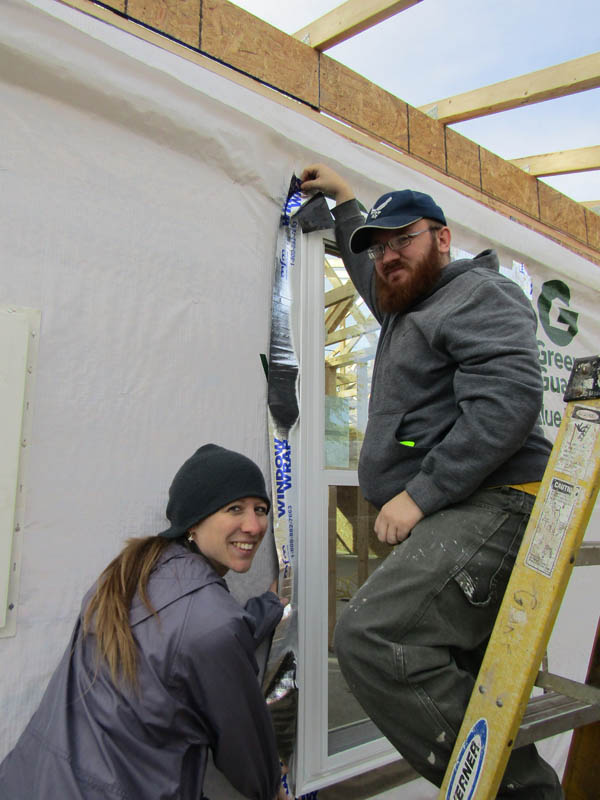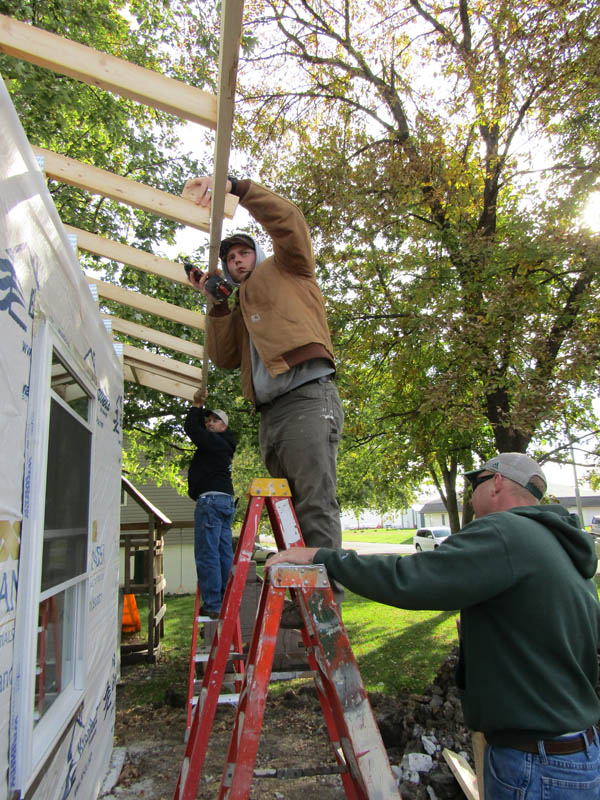By Christina Rice
Local law enforcement officers volunteered their labor on October 21 for the Habitat for Humanity house.
The house, located at 1315 East Jenkins in Maryville, is the ninth house built by Habitat for Humanity of Nodaway County and is projected to be finished by Christmas.
This year’s recipient family is Josh and Alea Mullins. They have three boys, seven-year-old Elijah, five-year-old Micah, four-year-old Isaiah, and a girl on the way. The couple went to school at Northwest Missouri State University. After graduation, they moved to Buenos Aires, Argentina, where they were missionaries. They taught English at the Buenos Aires International Christian Academy and had their first son, Elijah, there.
After Elijah’s birth, the couple moved back to Maryville. Josh is a science teacher in Fairfax and serves Calvary Chapel as the ministry coordinator.
Due the family’s size, this is the first four-bedroom Habitat house built in Nodaway County, making it the largest house at 1,500 square feet.
Habitat for Humanity of Nodaway County built its first house in 2004. Currently, the organization builds a home every other year for a qualifying family, chosen based on income level. When the organization is not building a house, it completes a housing renovation project which may include sidewalks and wheelchair ramps.
“It is making a difference in the community,” Habitat for Humanity of Nodaway County’s Board President Mike Baumgartner said. “It is also a faith-based organization so there is that extra connection. I like to help.”
Each family chosen to receive a house is required to put 500 hours of sweat equity, or work, into building their house. The 500 hours can be performed by the family, their friends and community volunteers. Because all of the labor is donated, the family’s house payment is significantly reduced.
Typically, the organization has from two to six families apply for a house. Habitat for Humanity uses a standard design blueprint to create a three-bedroom house that is energy efficient and wheelchair accessible.
“We are excited because on the last house we discovered many more ways to make the house efficient,” volunteer Jonathan Mitchell said.
The house walls will be made from structural insulated panels (SIPS). The panels are constructed with two pieces of strand board and are filled with an expanded polystyrene, rigid foam, allowing the house to be built with no studs.
The panels for this house come from Extreme Panel Technologies, Cottonwood, MN. According to sales representative Don Jahnke, the walls are twice as strong as traditional studded walls. He said they are 10 times more efficient and airtight than conventional walls due to the foam providing an all-season vapor barrier. They are flame retardant, will withstand 200-mph winds and endure a low-rated G earthquake.
“A screw inserted into the paneled wall has an 88-pound pull out force, making it strong enough to hang anything you want on the walls,” Jahnke said.
Although the SIPS are more costly than standard walls, they will lower utility bills by more than half and the sheets are 24-feet long, making them quick to install.
“We like working with Habitat, we do a lot of projects with them,” Jahnke said. “Most of the men in our plant work in our local (Habitat) chapter.”
Families interested in applying for a Habitat house can visit the website nodawayhabitat.org or contact Baumgartner at mail@nodawayhabitat.org.






Facebook Comments